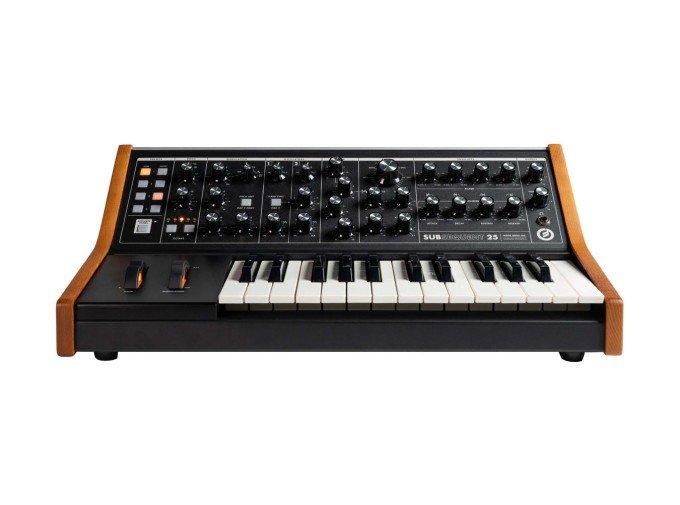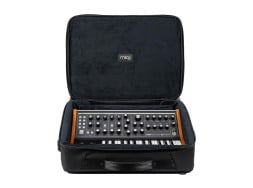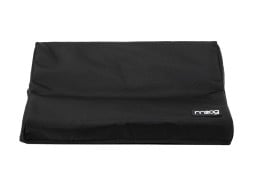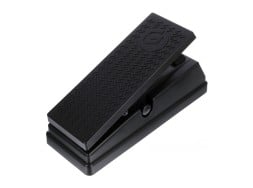MoogSubsequent 25 Analog Keyboard Synthesizer
-
 Free
Free
Shipping -
 No Hassle
No Hassle
Returns -
 Extended
Extended
Warranty
Moog Subsequent 25
The Subsequent 25 from Moog is a paraphonic analog synthesizer that uses a combination of classic Moog synthesizer designs with a new sound engine and preset management system for a fresh-sounding synthesizer that retains the character Moog is known for. Borrowing design elements from the Sub Phatty and Subsequent 37, the Subsequent 25 is a killer option for basslines, leads, duophonic lines, and more.
The 25-note full sized keyboard has velocity sensitivity and the ability to be transposed up and down in octaves. The oscillators each have four waveforms: triangle, sawtooth, square, and pulse. Oscillator 2 can be finely detuned from oscillator 1 up to seven semitones. This, in combination with the filter and mixer creates the kind of thick sound that analog synthesizers are known for. Oscillator 2 can also be hard synced to oscillator 1, eliminating phase differences between the oscillators. In addition to the two main oscillators, there is also a noise source and a sub-oscillator that tracks one octave below oscillator 1.
The mixer section allows you to blend these four audio sources. Turning the knob all the way counterclockwise silences the signal, while turning clockwise will let more of the signal pass. At the center position, the signals will be at unity gain—but turning further clockwise will add a gentle distortion that adds more warmth to the sound. The mixer section is one of the most overlooked aspects of a Moog synthesizer, but its importance should not be downplayed.
After the signals are mixed, they are passed to the filter. The highlight of any Moog synthesizer is the filter, and the Subsequent 25 delivers with the classic transistor-ladder lowpass filter that we all know and love. The filter offers the expected control of cutoff and resonance. Additionally, MultiDrive adds distortion to the signal, ranging from subtle analog warmth to gritty hard clipping with a wide range of tones in between. The filter also tracks the keyboard with adjustable amount, from off, 1:1 in the center, and 2:1 ratio at the highest setting. External audio signals can be connected into the Subsequent 25 for processing using the filter.
The Subsequent 25 features two ADSR envelopes, one for the filter and one for the amplifier. These range of lengths from 1ms to 10 seconds per envelope stages, allowing for incredibly long envelope times. The envelopes are activated every time you play a key, or can be triggered by an external signal using the KB gate input on the side of the unit. The Subsequent 25 also features an LFO modulation section. Using this modulation oscillator in the audio range adds thick, complex harmonics to the sound. The LFO has five waveforms: triangle, square, saw, ramp, and sample and hold. The sample and hold allows you to use random modulation to change parameters which can result in some unexpected and unpredictable sounds. The modulation waveform switch also allows you to route the filter envelope to any of the modulation destinations. The modulation section has internal routing to the oscillator pitch, filter, and the waveform selection with attenuators to set the depth of modulation. The LFO can be synced to external MIDI clock for tempo synced modulation. There are additionally three CV inputs (pitch, filter, and amp), to allow you to bring external modulation sources into the Subsequent 25's signal path.
The Subsequent 25 ships with 16 presets in four banks of four presets in internal memory that can be overwritten with user presets. An almost unlimited amount of presets can be saved using an editing plug-in from Moog when connected to a computer via the USB port. This editor additionally provides a graphical user interface that allows users to program their own sounds. There are 25 additional hidden parameters that can be accessed using the shift mode or with the editor. These include things like keyboard transpose, note priority, filter slope, LFO MIDI sync, and aftertouch scaling. The Subsequent 25 brings the classic sound of a Moog synthesizer in a modern package, allowing for analog sounds with preset management system to access all your favorite sounds from a touch of the button.
Subsequent 25 Features
- 25-key paraphonic synthesizer
- Classic Moog transistor ladder lowpass filter
- Dual oscillators with waveform selection
- Full-sized velocity-sensitive keyboard
- Preset management system with 16 presets
- Sub-oscillator
- Noise source
- MultiDrive distortion source
- External audio input
- Pitch, filter, and amplifier CV input
- Envelope gate input
- Headphone amp independent of main output level
- MIDI in and out
- USB
- Every knob sends MIDI data
- Modulation section with five waveforms
- Two ADSR envelopes with wide range of lengths
- Inputs:5-pin DIN MIDI, USB, audio input, CV on pitch, filter, and envelope, envelope gate input
- Outputs:Audio, headphone, MIDI output
- IEC power(included)
- 6.75 x 20.25 x 14.75"/171 x 514 x 375mm
 Analog vs. Digital Synthesizers: Which is Better?Settling the Debate Once and For AllBuying Guide: Keyboard SynthesizersThe Best Analog, Digital, and Hybrid Synthesizers for Studio + PerformanceMoog Subsequent 37 Analog SynthesizerYears Later...is it Still the Best Monosynth Available?NAMM 2020 CoverageNew Synthesizers, Drum Machines, Modular Gear, and MoreDeep Dive: Vintage Moog Modular Synthesizer FiltersDefining the Moog Sound
Analog vs. Digital Synthesizers: Which is Better?Settling the Debate Once and For AllBuying Guide: Keyboard SynthesizersThe Best Analog, Digital, and Hybrid Synthesizers for Studio + PerformanceMoog Subsequent 37 Analog SynthesizerYears Later...is it Still the Best Monosynth Available?NAMM 2020 CoverageNew Synthesizers, Drum Machines, Modular Gear, and MoreDeep Dive: Vintage Moog Modular Synthesizer FiltersDefining the Moog Sound



